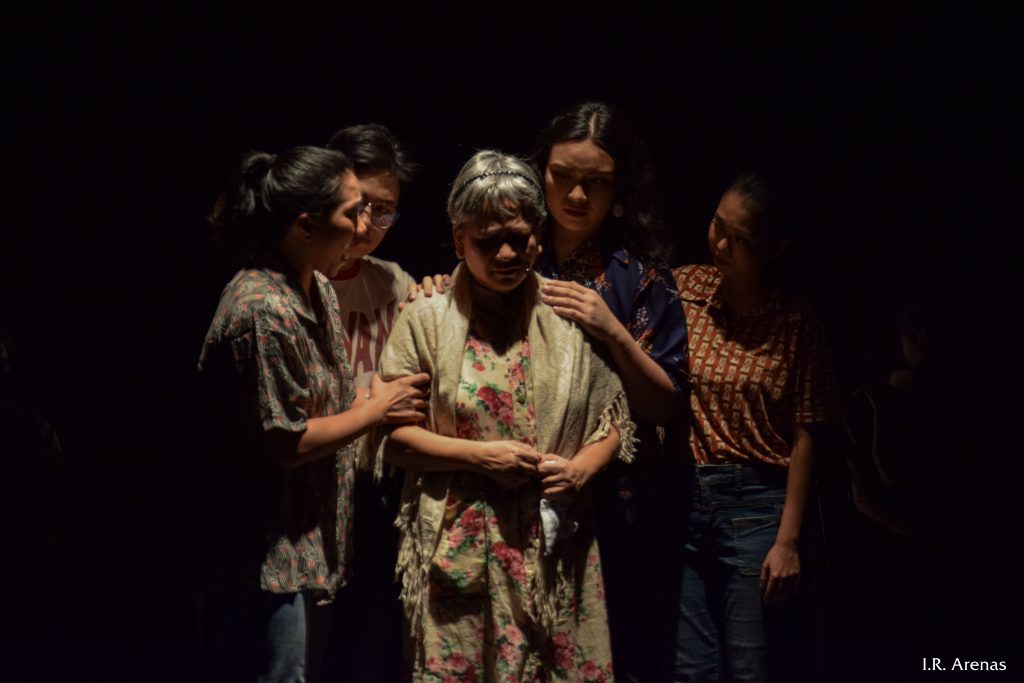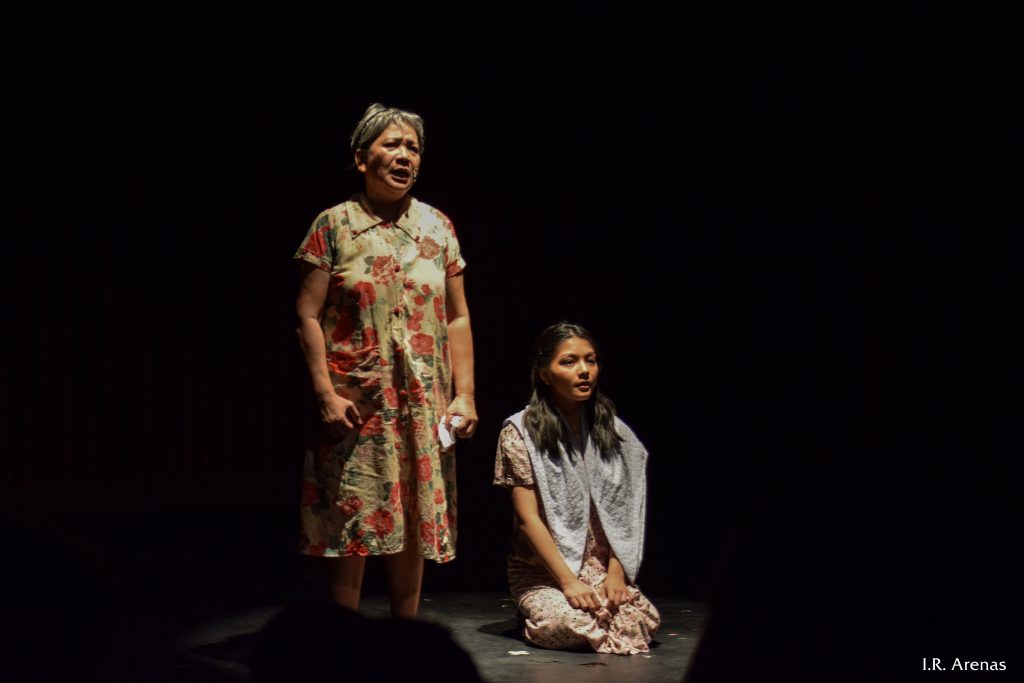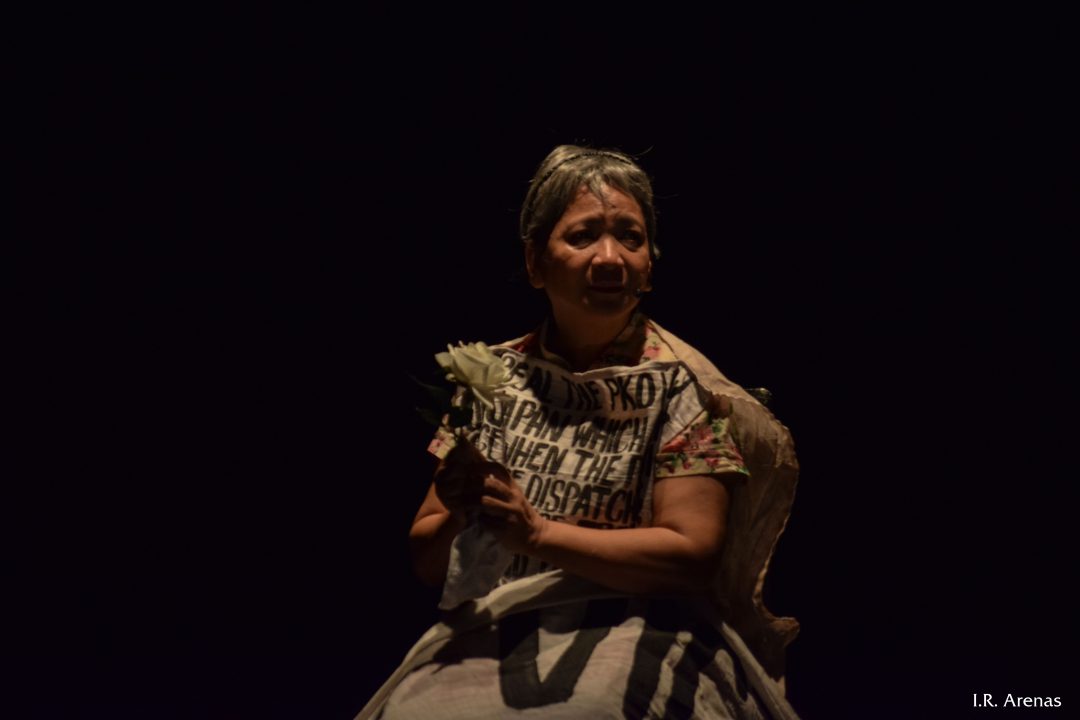Warning: Because of the nature of the show, this article will talk about sexual assault and rape.
Comfort women was the term used by the Japanese soldiers to refer to the women they abducted and forced into sex slavery during the World War 2. The term itself sanitizes the act: It zeroes in on the fact that soldiers used these women to give themselves comfort and pleasure, sidestepping the inhumanity of as many as 30 soldiers raping one woman a night. It shows the kind of “male dominance system within the Japanese military [that] allowed the society to name sex slavery as comfort.” Other terms used to refer to these women were “sanitary public toilets” and “gifts from the generous Emperor.”
When I was in college, I ran across my school’s campus to catch the last 10 minutes of a talk by Lila Pilipina. Short for Liga ng mga Lolang Pilipina, the organization is comprised of the surviving Filipino comfort women and their allies and it aims to seek justice from Japan. Emphasis on aims. As I heard from the lolas themselves, these women are still waiting for just the mere acknowledgment that they were raped and forced into sex slavery, a full 74 years after WW2 ended. The Japanese have still remained ambiguous, even in their apology, about the existence of the comfort women, and they are still actively trying to rewrite history.

This bitter, cruel play between history and the remembrance of it is what the UP Playwrights Theater is bringing to the fore with their latest production Nana Rosa. Originally written by Rody Vera for film and directed by Jose Estrella, the play revolves around Maria Rosa Luna Henson, the first of the lolas to come out as a comfort woman in 1992. It’s heavily based on Henson’s autobiography Comfort Woman: Slave of Destiny, her diary, and reports that came from that time.
The first act deals with Henson retelling her life during WW2 to the Task Force set up to find and fight for the comfort women. She tells the full story, beginning not when she was abducted, but at the circumstances of her birth, giving us a clear view of the society she was born into. I’ll be blunt: Philippine society allows for rape to happen.
Two actresses play her on stage: Peewee O’Hara (who alternates with Upeng Galang Fernandez) as the present day Henson and Krystle Valentino (who alternates with Ingrid Villamarin) as the young Rosa. Nana Rosa isn’t just plainly retelling her story, and the young Rosa isn’t just a flashback. The two interact, and they fight: Young Rosa pleads to Henson to stop telling the story, to stop letting her live through the rapes; Henson chastises her old self, telling her that she has to do it. Even internally, Henson has to fight to tell her story, her own self telling her that it would be better for her past to stay hidden, “nakabaon sa limot.”

Seeing both Rosas on stage at the same time is chilling. Their ages are in stark contrast with each other, emphasizing each other’s youth and maturity. We remember that Rosa wasn’t just a young woman when she was abducted, she was just a girl. We also remember that Rosa wasn’t just a grown-up when she told her story, she was an old woman. A lola.
And that to me has always been one of the sticking points when discussing the comfort women. The comfort women are our grandmothers and even great-grandmothers. It’s a hard thing for many to swallow because our patriarchal society desexualizes the elderly, erasing their bodies and their sexual history and making it harder for people to view old women as survivors of sexual assault.
And the sexual assault is vividly played out. Nana Rosa does not sanitize the rapes (plural, there are multiple rape scenes) Henson experiences as a sex slave. For example: When all the comfort women are abducted, their rapes are simultaneously portrayed on stage, with soldiers coming in one after the other to assault them. This scene in particular, while amazingly choreographed, was so graphic and visceral that I sent a text to a friend during intermission: “Was it necessary for it to be that graphic? Was it exploitative? Are we figuratively raping Nana Rosa again?”
My questions were answered in the second act, which deals with the aftermath of her coming out with her story. While Henson and the Task Force get some wins, they didn’t have an easy time. Many people either flat out didn’t believe her or diminished her experience. Many also accused them of damaging diplomatic relations between the Philippines and Japan—which is a good shorthand way of saying that politics is more important than a woman’s body. To quote Louise du Toit’s A Philosophical Investigation of Rape: “The usual systematic exclusion of rape from the considerations of the public-political realm is thoroughly intertwined with the exclusion of women as women from that realm, i.e., through the systematic privatization and parochialization of women’s interests and concerns as opposed to the ideological universalization of men’s.”
When their experience is called into question this much, especially by their own countrymen, and politicized and diminished, then maybe it is necessary to show the inhumanity and brutality of the act.

One clever thing the show does to highlight the inhumanity of the comfort women’s abduction and sexual assault, aside from making the assaults graphic, was to show the soldiers talking about mundane things while someone was being assaulted and screaming for help. It shows the banality of evil, as Hannah Arendt might’ve put it. The comfort women, in the soldiers’ eyes, were just things to be used. To them, the atrocities they committed weren’t evil, just something that they did because they were in a war.
The play ends in a hopeful but morose note. More comfort women come forward, and they become their own support system. Still, they don’t get to see justice. The ghosts of Nana Rosa’s past continue to haunt her. And in the present day, we see our own president trying to take out a comfort woman statue so as to not antagonize Japan.
When I was in college, I ran across my school’s campus to catch an open discussion by Lila Pilipina. Sweating under my blouse, I made it in time to see the last few women talk, but it was the last woman’s speech that stuck with me. And to this day, I still see that frail old woman in her delicate Filipiniana, her voice wavering and tears already spilling from her eyes, saying, “We’re old, we’re dying, and we still haven’t seen justice.”
Photos shot by Irvin Arenas, courtesy of UP Playwrights Theater
Get more stories by subscribing to our newsletter here.
Read more:
Remembering the “Rape of Manila”
Important statue honoring sexual abuse victims of WWII disappears
To these women in MILF, peace and security means reclaiming their rights
Read more by Zofiya Acosta:
A Filipino woman is raped every 72 minutes
Our company is giving menstrual cups to our women employees because we care about the environment
What women and children wore when they were raped or sexually assaulted
Writer: ZOFIYA ACOSTA



